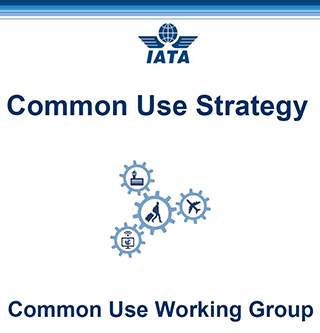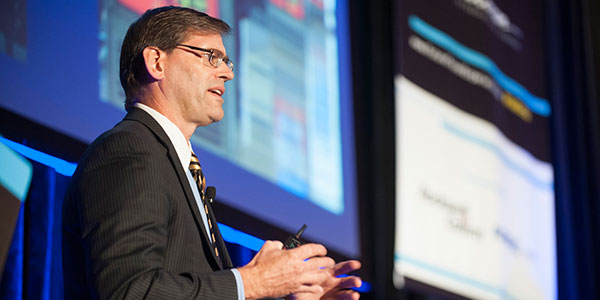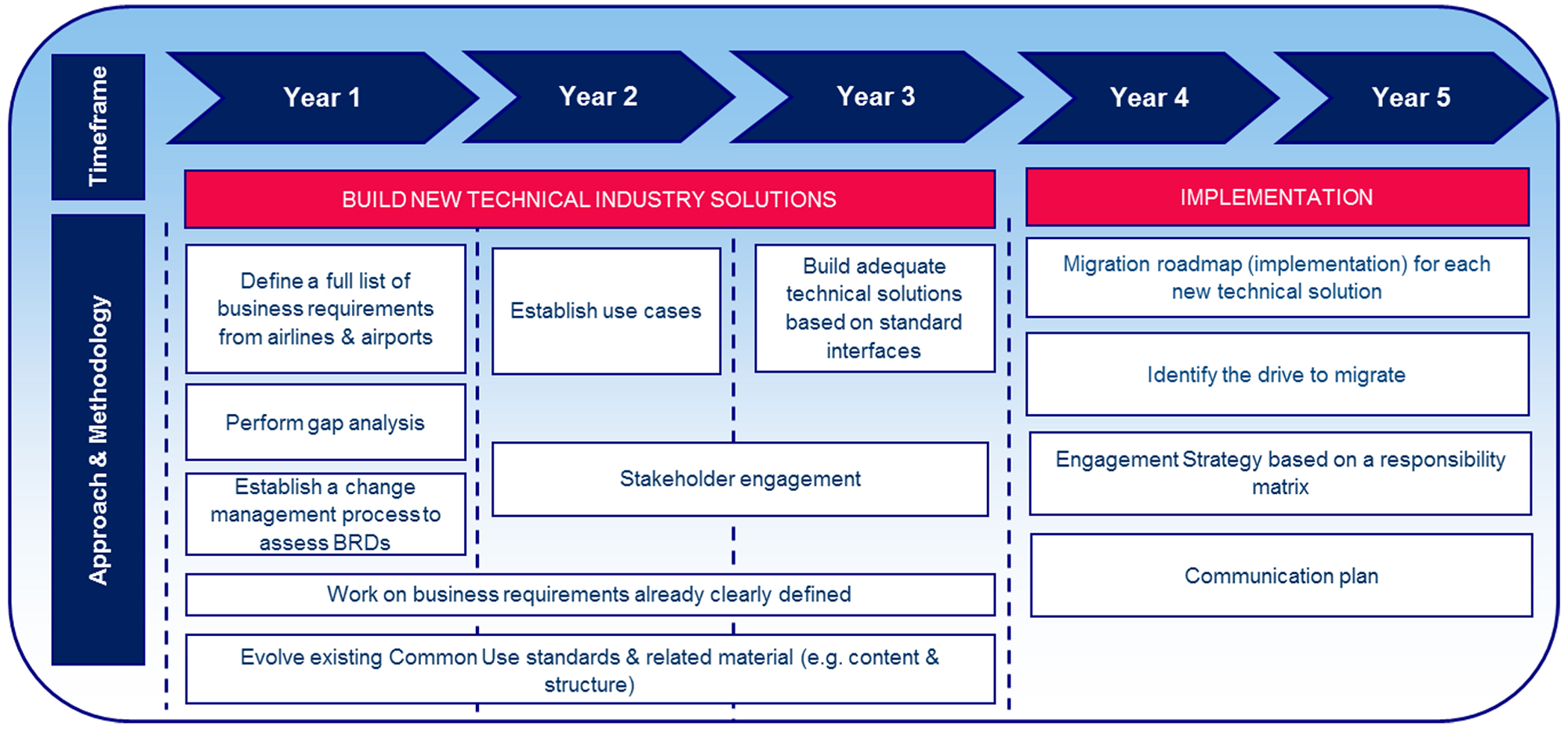
The topic of common use has continued to be a key point of focus for the industry throughout 2014, with discussions relating to the benefits, obstacles and the impact of new developments engaging stakeholders from across the air transport sector. Now, to outline its vision and plans in this space, IATA’s Common Use Working Group (CUWG) has launched a new Common Use Strategy.
The purpose of the document is to provide a clear strategy to drive the activities of the CUWG over the next five years and the final version is the result of discussions among the CUWG, two strategy meetings held in London with participation from IATA Member Airlines and IATA Strategic Partners, and follow-up meetings and calls with targeted airlines, airports and common use vendors.
“There is an opportunity,” the document states, “to challenge all aspects of common use from technical requirements through to business models at a time where the need to manage an efficient operation without the high costs of dedicated facilities has evolved with the shift to self-service passenger processing, in addition to a general progression in technology and further work on the passenger process.”
Having read the new strategy, FTE sought the views of Samuel Ingalls, Assistant Director of Aviation, Information Systems at McCarran International Airport and past chair of IATA’s CUWG, who succinctly highlighted the relevance of this new document.
“Common use,” he explained, “has been in place at airports around the world for three decades, driving both operational efficiency and cost savings for the industry. During that time period, both technology and process evolved significantly. Both the CUSS (Common Use Self Service) and CUPPS (Common Use Passenger Processing Systems) development efforts by industry stakeholders were always intended to be “living standards”, with modification and updates as needed by the industry. At this point, the roadmap developed should effectively guide further evolution in the important area of passenger processing.”
The five-year common use vision
At the heart of the Common Use Strategy is the following vision: “By 2020, common use will provide flexibility of choice to deploy services based on interfaces adhering to industry standards”. These interfaces will range from web services, cloud computing and mobile devices through to standard desktop offerings.
Offering his thoughts on this vision, Ingalls stated: “Airports have billions of dollars invested in their terminal facilities, and those facilities need to be efficiently used in order to realise the full benefit of that investment. Standard interfaces speed overall deployment and facilitate the development of new processes against those known interfaces. For the air carriers, the ability to have a clear understanding of the environment helps minimise development difficulty and maximise deployment efficiency.”

Additional core principles are highlighted in the document, including: facilitation of business processes; minimum, defined functionality; transparency including predictability, serviceability and affordability; and compliance to Payment Card Industry Data Security Standards (PCI DSS) for common use infrastructure.
Also of note is the Common Use Mission: “The Common Use Mission is to provide on-demand operationally flexible and resilient passenger processing services using interfaces adhering to industry standards that leverage contemporary technology to enable the integration of services from multiple owners.”
Case for change
So, what exactly is the case for change for airlines, airports and passengers? One of the points highlighted is the fact that airlines are no longer a homogeneous group; nowadays there is huge diversity in airline business needs and models. Airlines and airports are both “frustrated by the slow pace of change and the inability to implement changes in a timely fashion” and the aviation industry is “very much moving to the pace of the lowest common denominator” at present.
In reference specifically to airlines, many would like to be able to differentiate their service offering based on the way they process their passengers, they would like to be able to choose different ways of delivering services to their customers (e.g. mobile/traditional methods), they require a card payment solution that is PCI compliant for self-service and agent-facing touch-points that use shared infrastructure, and cloud technology “will become the prevailing technology allowing airlines more flexibility to deliver their services directly or via a third party”.
Speaking to FTE, Magali Collot, IATA representative of the Common Use Working Group, explained that IATA supports the Common Use Strategy that represents the views of airlines, airports and IATA Strategic Partners involved in the CUWG, adding: “From an airline point of view, standard interfaces are definitely the way forward. The flexibility allows an airline to choose the standard interfaces (e.g. web services, cloud computing, mobile devices and/or desktop offerings) that would be presented to its application so that the concept of certify on one platform, run on many remains a core principle. It is also paramount that the standards in the realm of common use evolve based on both business needs and technology.”
Airport and passenger requirements
In terms of airports, the strategy highlights the fact that they need to maximise the current investments in terminal facilities and avoid unnecessary capital expenditure to build additional facilities, while also ensuring terminal space is utilised effectively and efficiently, creating an intuitive environment for passengers. It states: “Airports have a growing need to understand the requirements of their airline tenants, and to create a flexible IT environment, where this makes sense.”
A number of airport requirements relating to shared infrastructure are also highlighted, including the fact that airports would like to provide a portfolio of common use services including self-service and other options, from which airlines can choose in order to provide a seamless passenger journey to and through the airport.
Another important point is that airports want to be able to choose between on-site and off-site IT services, which means Wi-Fi access will become one of the most important enablers and a great facilitator of the common use environment. PCI DSS compliance is also equally applicable to airports.
In addition to the requirements and expectations of the airlines and airports, the Common Use Strategy takes into consideration the passengers’ viewpoint. Recognising the fact that passengers have completely different profiles and needs, and that the same passenger could even have different needs depending on the purpose of their trip and the airport location, it recognises that passengers now like to use their own devices, such as mobile phones and tablets, for processing. As well as needing access to the relevant infrastructure to complete all of the key steps in the air travel chain (e.g. check-in, bag drop, boarding), they require real-time information, which would ideally be delivered to their mobile devices.
Implementing the strategy

The aim of the new Common Use Strategy is to continue to build on these benefits for the industry. However, drafting a document is one thing, but implementing it is where the real benefits lie, and IATA’s CUWG says realistic key milestones should be agreed in order to achieve the latest five-year common use vision. The above illustration shows the cycle to build adequate technical solutions based on standard interfaces and the efforts needed during the two-year implementation phase for each new technical solution.
This approach should be followed on an ongoing basis when new business requirements emerge and technologies need to be applied to these new requirements in order to produce new common use industry solutions.
Achieving this five-year vision requires buy-in from a variety of industry stakeholders, but as a starting point, we recommend that you take a closer look at the Common Use Strategy.






